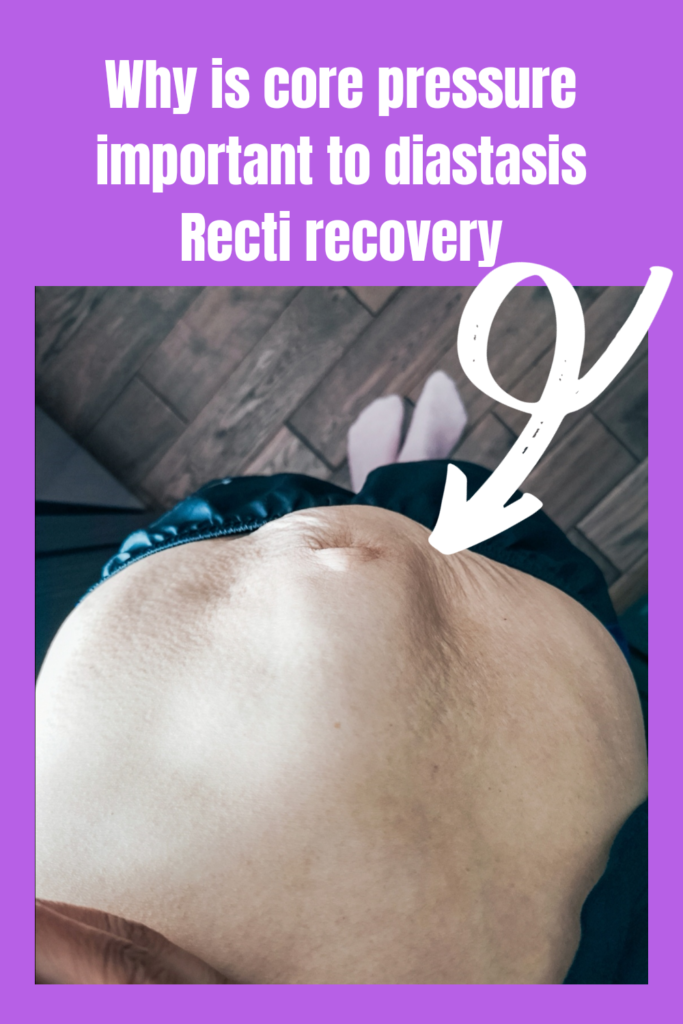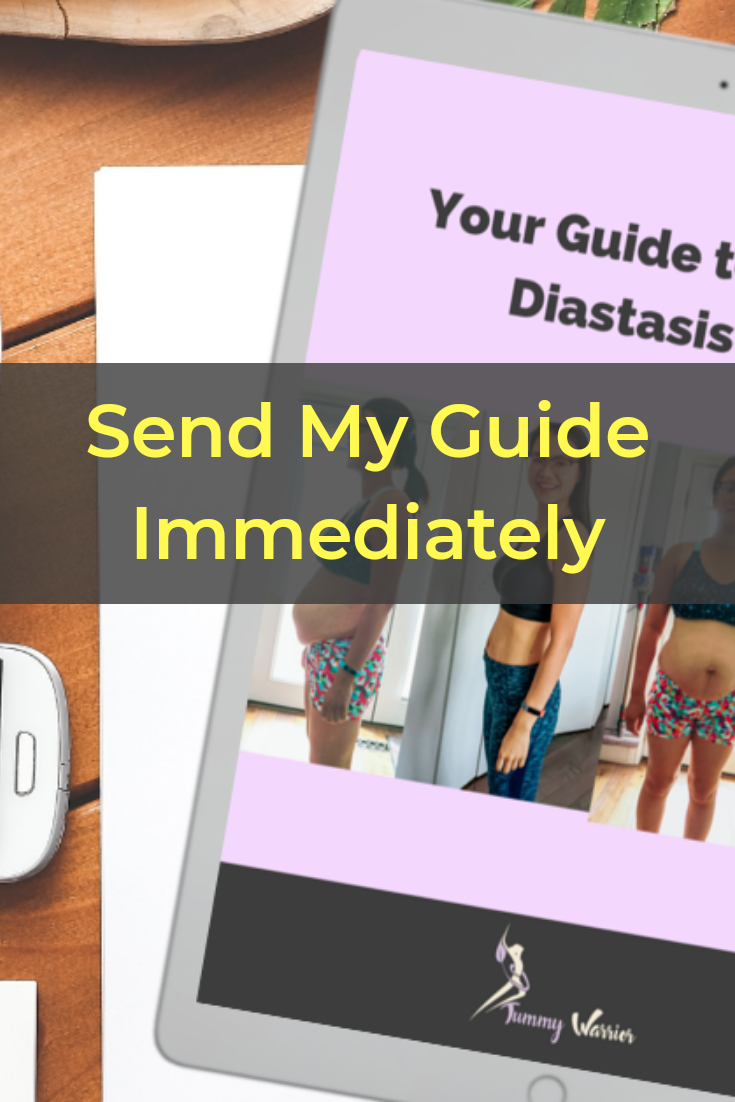What does abdominal pressure mean, and why does it matter to heal your diastasis recti?
It matters a lot because if you are not watching your core pressure, you are not reaping the benefits of your exercises to heal DR, worst yet, it would hinder your progress or potentially make it worse. In this post, I will share what is core pressure, how you can identify it and what to do.
Intra-abdominal pressure is natural, it protects the spine and keeps it healthy. But when you have an excessive amount of pressure in your abdomen, it causes the diastasis recti.
In some events, the pressure will
push outward which could cause a hernia,
push downward which could cause pelvic organ prolapses.
push upward which messes with your deep breathing pattern.
As you see, when there is too much pressure for a prolonged period, something has to give as the body can’t handle it optimally, it has to find another way out.
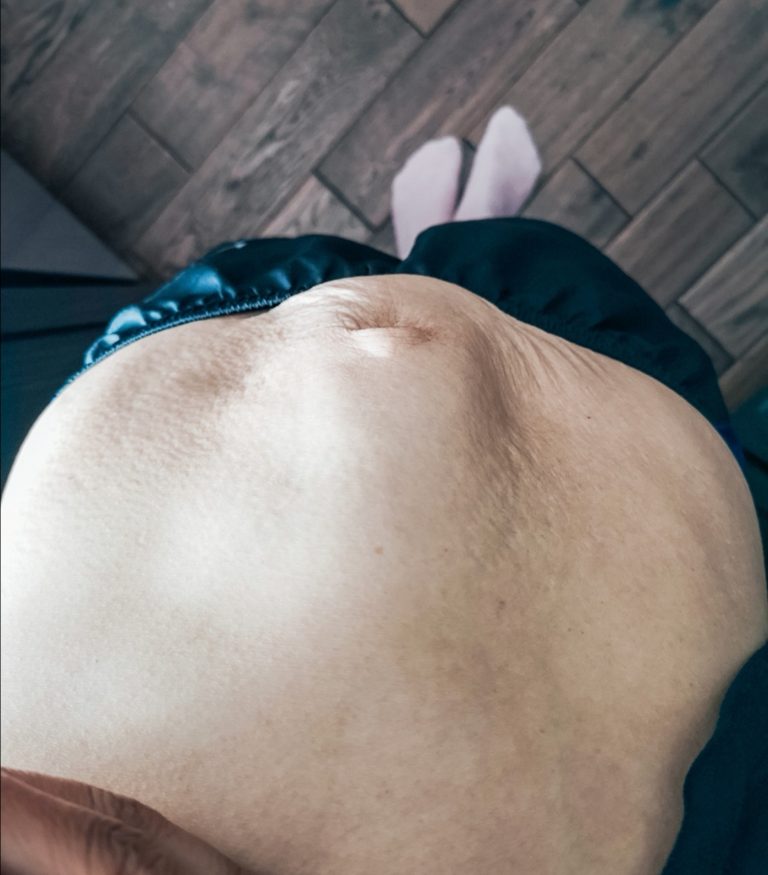
You will often find that bridge is one of the recommended exercises to heal your diastasis recti. But is it?
Take a look at this example, Mama S is one of my private clients and she has a pretty wide and deep belly button diastasis recti. We have been working on the foundations and one day I asked her to try bridge.
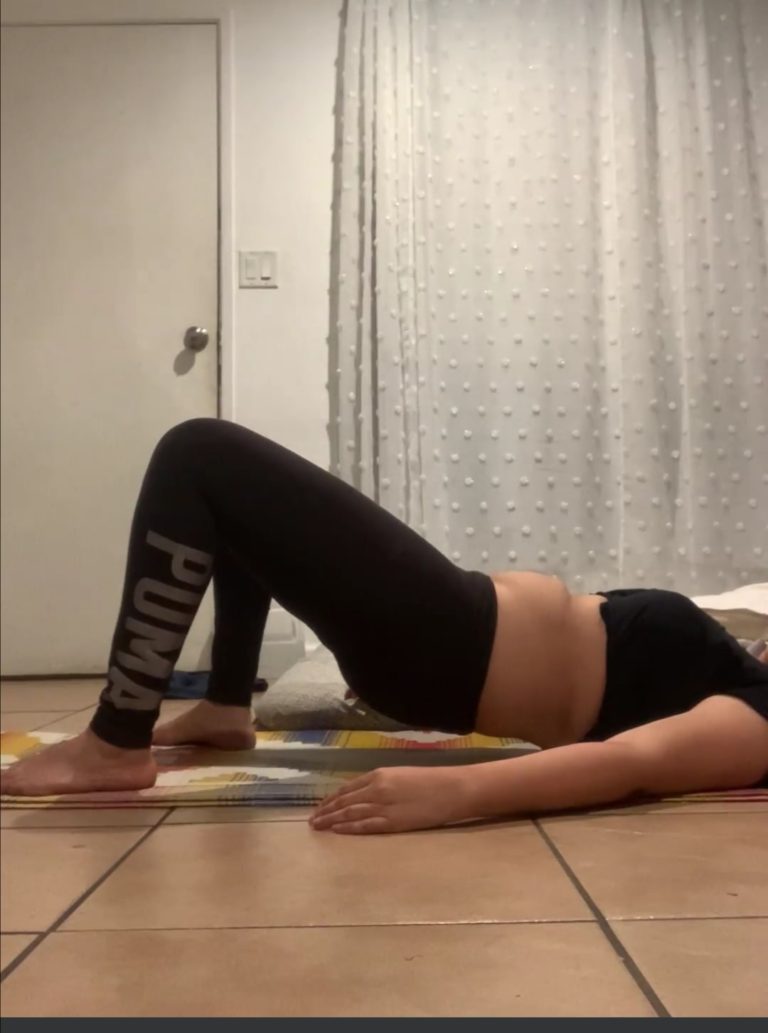
The first attempt she tried doing the bridge was the photo above even though she said she was doing the bottom-up approach that I taught her which is initiating the engagement from her pelvic floor first and engage her core, and then lift.
Clearly, that didn’t work well with her body, as you can see the bulge right on her belly, which forms a round shape wrapping around the waist.
Her mind knows what she needed to do, but her body operates the “wrong” muscle creating the abdominal pressure. This pressure pushes against her stomach and stresses the connective tissue.
If she continues to do bridges or other exercises like this, she won’t heal her diastasis rather worsen it.
No way I make her do another bridge like that. So the same day, I gave her a different cue when it comes to initiating her bottom-up approach.
Instantly, as you see the second picture, her bulge is completely gone.
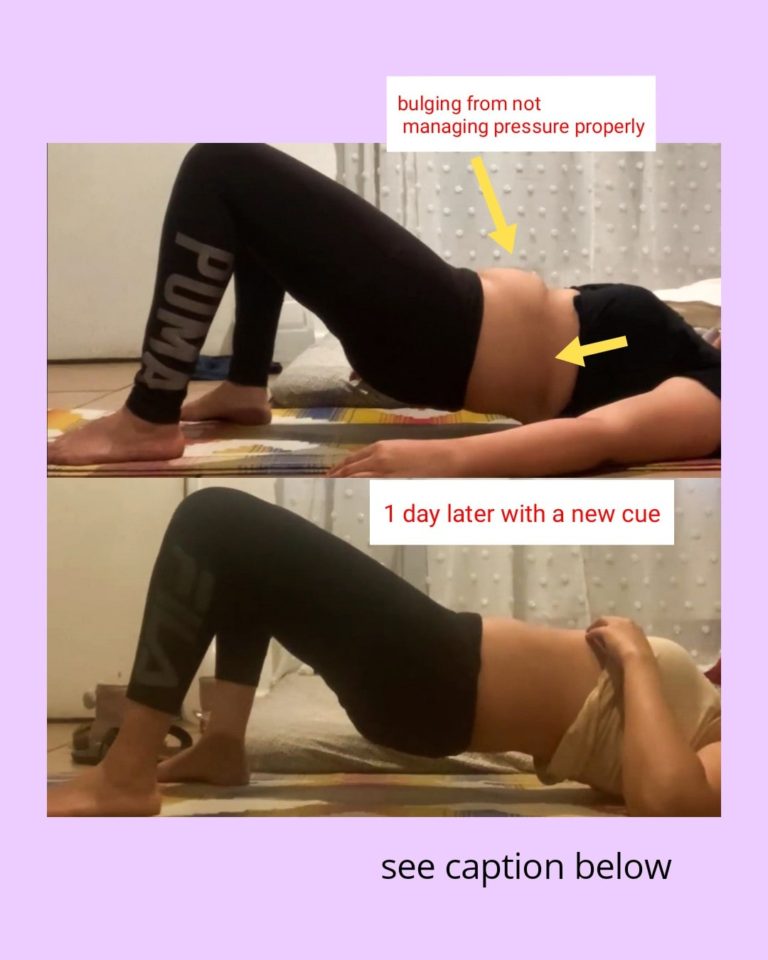
This is how you would do a bridge properly as you are controlling your core pressure. So if you are ever wondering when an exercise is right or not for you (even though they are labelled as DR safe) you need to watch out the 4 most important indicators on yourself.
I talked about this in detail in my carousel Instagram post. – what is Doming, Bulging, Sinking and Bearing Down.
Imagine when you regularly do a plank without knowing how your core pressure affects your body, it can cause a big problem down the road.
Think about the last time you were sick and you cough and sneeze for the whole week, did your belly feel a little different after? Perhaps sorer? perhaps you have more back pain?
Coughing and sneezing generate a lot of intra-abdominal pressure as you uncontrollably force the air out. Hence core pressure isn’t something you only look at when you exercise, it should be monitored throughout the way.
You need to learn how to regulate your core pressure so that you can anticipate and brace when you need to use more energy like the coughing example, lift a heavy car seat and when you workout.
This is especially true when you have an umbilical hernia which is commonly found with diastasis recti. A hernia happens where there is a hole in your abdominal muscle wall and an organ such as your intestine protrude outside. When you are not regulating your core pressure, this could worsen that condition of the hernia as it gets pushes outward every time you are exerting energy.
And the best way to start regulating your core pressure is deep breathing. A good deep inhale sends pressure down to your pelvic floor, along with back, belly, and side rib expansion. The inhale spreads evenly amongst all sides of your body.
Things that could disrupt your deep breathing pattern:
- you wear the wrong abdominal binder
- you suck in your belly all-day
- You wear tight jean or pant that dig your belly
- your pelvic floor is not relaxed when you inhale
As you are practicing inhale, another important component to help regulate your core pressure is your body alignment.
We are not looking for that perfect model looking posture, but if you are arching your back, or you are hunching forward, or your ribs are flaring out, then it is hard to regulate the pressure with a “bent can” of body
To learn more about how to heal your DR step by step, download the free DR recovery guide.
PIN ME!
